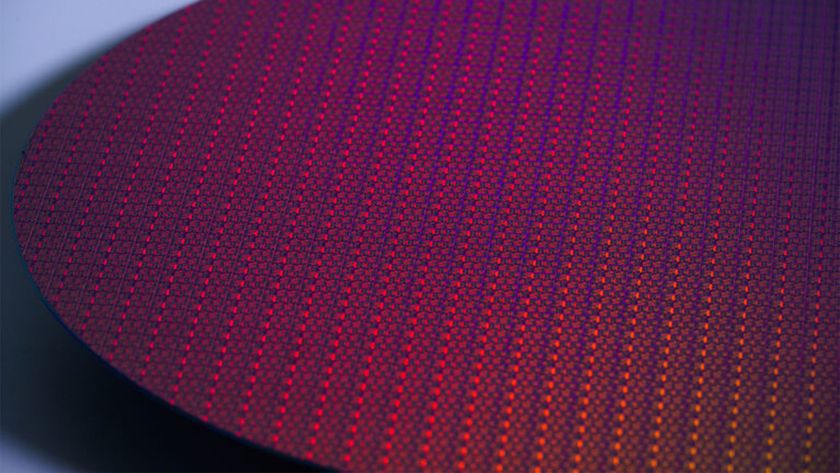TechRadar Verdict
The price will be a turn-off for many, but this is a precision tool for demanding users. Sports, wildlife and press photographers have never had it so good
Pros
- +
Thoughtfully updated
Jaw-dropping picture quality
Fantastically versatile
Cons
- -
Very expensive
Why you can trust TechRadar
Appearances can be deceiving. Canon's latest machine-gun of an SLR looks, to all intents and purposes, like any other model in the 1-series.
But it's clear that the Japanese giant's 'imagineers' have listened to the requests of digital photographers when they set about updating the fastest model in their SLR range.
While the shell still feels as though you could hammer tent pegs in with it, every other feature from the Mark II model seems to have been considered for enhancement, relocation or removal.
It's a camera that's been designed with today's photographer in mind - from a smaller, weight-shaving battery to a three-inch LCD, complete with Live View. Even the neck strap's undergone a redesign.
Although the viewfinder and vertical grip still don't quite match the comfort levels of the Nikon D2X, it's a camera that sits beautifully in the hand. The position of the buttons is more logical and the camera operation more intuitive than with the 1D or 1Ds Mark II.
Canon has reduced the number of buttons too, and switched operation from a two-button and dial combination to a single button press and dial shift to change key functions. It makes much more sense.
One-handed
The new dedicated ISO button placed on the right-hand side of the top plate enables one-handed operation, speeding up reaction time when the pressure's on. Being positioned at the bottom-left of the LCD screen, the playback button's perfectly placed to trigger quick histogram and sharpness checks on the supersized monitor.
An autofocus lock button replaces the focus-point return button (whose useful function which can now be assigned to the multi-controller above the quick control dial). In fact, the only thing that takes a little growing accustomed to is the autofocus system.
Not in terms of performance - it proved positive and fast, locking on and tracking small subjects in the frame with precision in our tests - but in terms of the way you select your focus point. Via a custom function, you can opt to restrict the manually selectable points to an inner ring of nine, an outer ring of nine or both.
As mentioned, the return to focus point control can now be assigned to the multi-controller. This can make vertical shots a little fiddlier than on the Mark II as there's only one of these and it's a stretch to reach it with your thumb.
There is an incredible range of menu options for customising the focusing system, including changing the priority in for AI Servo/Continuous shooting (with priority given to tracking, drive speed or shutter release), adjusting the sensitivity of AI servo tracking and micro-adjustment on the focus of different lenses.
In fact, even 1D Mark II users will have to spend a little time growing accustomed to the new menu structure and custom function settings. For anyone new to Canon's pro-level cameras, this body will be initially intimidating to get to grips with. Usefully, you can store a bank of your most frequently-accessed menu options under a My Menu option, as well as storing up to three banks of custom-function settings.
The Mark III's top speed clocks in at ten frames per second. This blistering rate works as long as the battery's got enough capacity - you can also reduce the high and low drive speeds via a custom menu if you don't need to burn frames at quite such a rate. The Mark III also introduces a new S mode - a 'silent' single shooting option, which provides a quieter alternative to the regular single-shot mode.
The Mark III also sees Canon introduce a Live View mode to its DSLR range. The mirror has to be locked up to achieve this, metering is set to evaluative and you'll only be able to focus manually (a section of the image can be enlarged to aid with this and we found it worked well).
We found this a good option for crowd scenes - the 3-inch screen gives a wide angle of view, while a grid overlay helps refine framing when you're holding the camera at unusual angles. Shots taken at high ISOs and for longer exposures do start to look a little noisier in the shadows though.
The image quality this camera's capable of is simply stunning. Margarine-smooth images at ISO 100 and 200, low-noise shots at ISO 400 - and eye-openingly good above that. ISO 1600 is of such an acceptable quality that it opens up new photographic opportunities, delivering action-stopping shutter speeds at low light levels.
The files are of such a beautiful quality to begin with that they hold up well to processing too. You'll need to shoot RAW to take advantage of the full potential of this camera, but the results are worth it.
Via PhotoRadar
Tech.co.uk was the former name of TechRadar.com. Its staff were at the forefront of the digital publishing revolution, and spearheaded the move to bring consumer technology journalism to its natural home – online. Many of the current TechRadar staff started life a Tech.co.uk staff writer, covering everything from the emerging smartphone market to the evolving market of personal computers. Think of it as the building blocks of the TechRadar you love today.

Gabby Petito murder documentary sparks viewer backlash after it uses fake AI voiceover

China 'sinks' 400 servers equivalent to 30,000 gaming PCs as it powers ahead with massive underwater data center project - but I wonder what GPU they use

Can 18A save Intel from being devoured by its rivals – and Wall Street?
Most Popular




